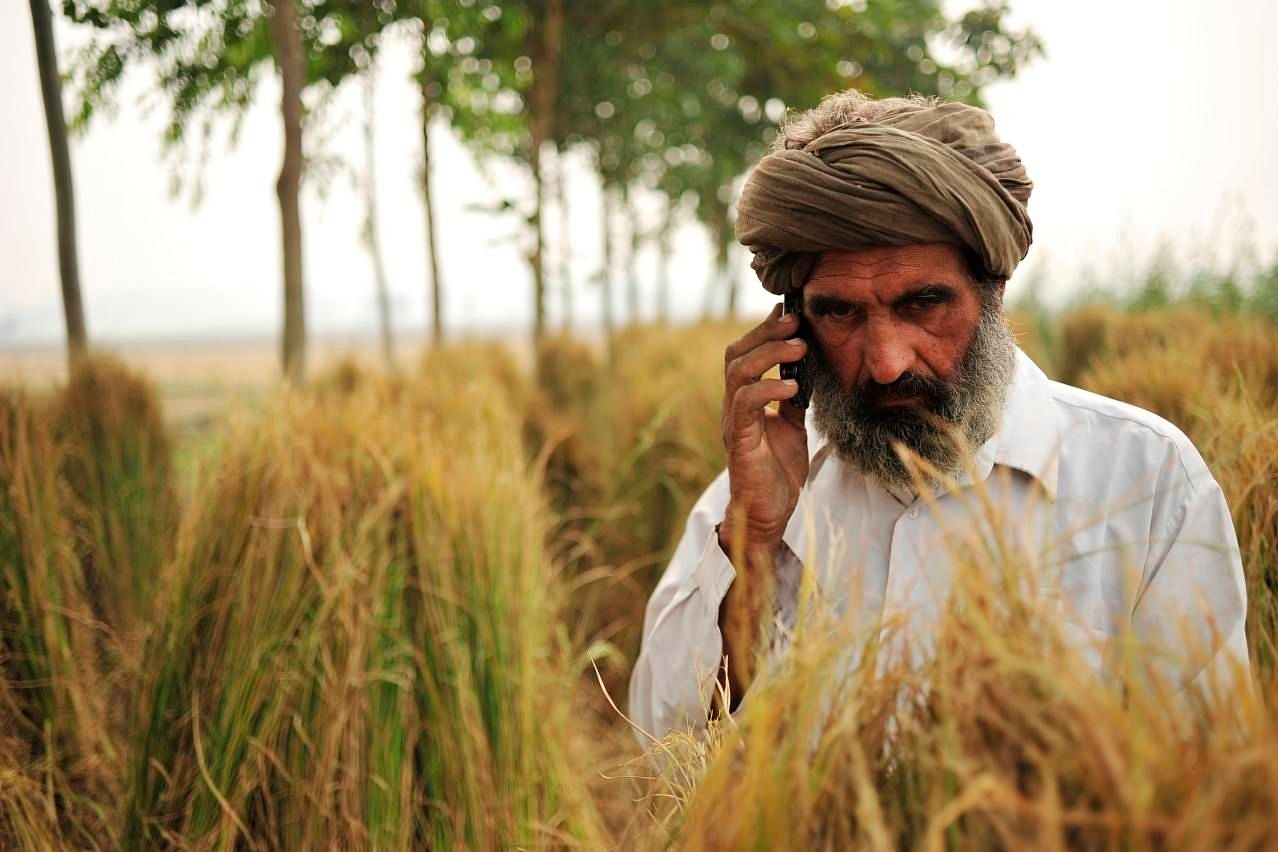Economy
Centre’s Focus On Cereal Producing States Encourages Lazy Farming, Says SBI Economic Think-Tank
- “It is an irony that the value of cereals per hectare is 12 times less than fruits and vegetables, but we keep on eulogizing cereal production,” says the Ecowrap report.

A farmer in Punjab. (Flickr/CIAT)
Farmers’ agitation i taxes and fees the States rec,eive range from 8.5 per cent in Punjab to less than one per cent in some States. Punjab gets 6.5 per cent as minimum support prices (MSP) mechanism being discontinued but due to vested interests as some states are concerned over the loss of revenue from mandi taxes and fees, State Bank of India’s (SBI) economic think-tank, Ecowrap, has said.
Currently, the mandi taxes and fees the states receive range from 8.5 per cent in Punjab to less than 1 per cent in some states. Punjab gets 6.5 per cent as mandi tax and 2 per cent for handling central procurement, according to SBI Group Chief Economic Adviser Soumya Kanti Ghosh.
During the pre-Goods and Services Tax regime, mandi taxes and fees were to the tune of 14.50 per cent for wheat and rice in Punjab and 11.50 per cent in Haryana, the two major states from where the foodgrains procurement make up a considerable chunk of central procurement.
In Andhra Pradesh, the mandi taxes and fees made up 13.5 per cent for rice procurement, according to the Shanta Kumar report or High Level Committee Report on Reorienting the Role and Restructuring of Food Corporation of India.
Ghosh said in his report that Punjab earned Rs 3,500 crore annually on these taxes and fees. The irony is that the state governments charge the Centre for its procurement, which is actually helping its farmers sell their produce at MSP.
The Shanta Kumar report said that much of the procurement done by the central agencies was from large or well-to-do farmers and in a few select states such as Punjab, Haryana, Andhra Pradesh, Madhya Pradesh and Chhattisgarh.
Ghosh adds strength to the Shanta Kumar report saying that apart from Haryana, none of the states where farmers annual income is higher than the national average sell their crops on National Agricultural Market (eNAM), a unified agricultural market for agricultural commodities.
According to the SBI official, 16.7 million farmers are currently part of eNAM and four states made up 65 per cent of these participants.
Pointing out to the inefficiencies of the Food Corporation of India (FCI) as stated in the Shanta Kumar report, Ghosh said a fact to ponder over is that India is no more a cereal granary it was during the 1960s.
The contribution of cereals in the value added for crops has dropped from 49 per cent during 1968-69 to 28 per cent during 2018-19. The share of fruits and vegetables has surged tremendously to currently 30 per cent against 14 per cent in 1968-69.
Stating that India followed a legacy and lopsided system of procurement of cereals implemented in 1960s to benefit from the cereal granary states such as Punjab and Haryana, Ghosh said foodgrain procurement from Uttar Pradesh and West Bengal — the number one and two in rice production — was only 18 per cent by FCI.
Procurement from Punjab and Haryana, which rank lower in rice production, is a staggering 90 per cent. Uttar Pradesh is also the largest producer of wheat, but again a laggard in wheat procurement.
These lopsided procurement has resulted in significantly skewed income of agricultural households with the average income in Punjab at Rs 2.8 lakh being 3-3.5 times higher than states like Uttar Pradesh and West Bengal, he pointed out.
This also distorted eNAM participation with more participants from Uttar Pradesh and less from Punjab thus distorting market pricing. Also, uneven procurement across select states has resulted in a significant burden on the exchequer with FCI total outstanding loans expected to surge to Rs 3.22 lakh crore by end-March 2021.
“It is an irony that the value of cereals per hectare is 12 times less than fruits and vegetables, but we keep on eulogizing cereal production. Fruits and vegetables have the highest value of output per hectare followed by condiments and spices,” Ghosh regretted.
Juxtaposing agricultural land-use statistics with productivity and production, the SBI official said foodgrains had lower estimated output per hectare.
Pointing out that the new agricultural export policy aims at boosting high-margin and value-added products, Ghosh stressed the need for a white and protein revolution now.
Heartily welcoming the three bills passed by Parliament to change the way in which agricultural produce will be marketed, sold and stored in the country, he said their objective was to increase the availability of buyers for farmers’ produce.
Calling for moving up the agricultural value chain, Ghosh said that India now badly needs another white revolution.
He said the agricultural reforms legislations might not be sufficient to attract more buyers, though the freedom of choice these bills give is a step in the right direction.
Introducing ElectionsHQ + 50 Ground Reports Project
The 2024 elections might seem easy to guess, but there are some important questions that shouldn't be missed.
Do freebies still sway voters? Do people prioritise infrastructure when voting? How will Punjab vote?
The answers to these questions provide great insights into where we, as a country, are headed in the years to come.
Swarajya is starting a project with an aim to do 50 solid ground stories and a smart commentary service on WhatsApp, a one-of-a-kind. We'd love your support during this election season.
Click below to contribute.
Latest